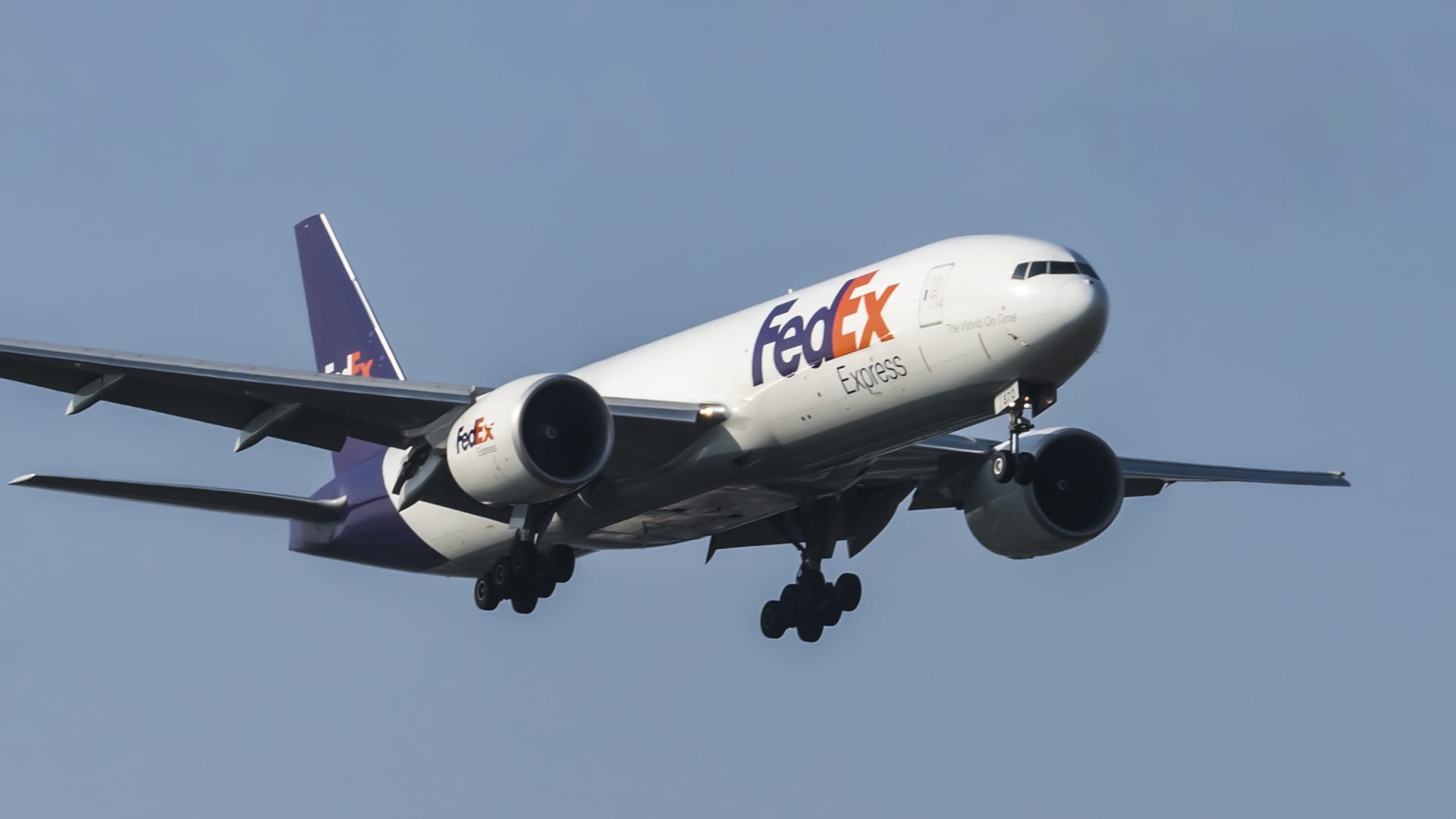Alibaba falls more than 5% after it reports slowest ever revenue growth and misses expectations

Alibaba’s headquarters in Hangzhou, China, on Wednesday, Nov. 10, 2021.
Qilai Shen | Bloomberg | Getty Images
Alibaba on Thursday reported its slowest quarterly revenue growth since going public and missed expectations, but the Chinese e-commerce giant did beat on earnings.
Here’s how Alibaba did in its fiscal third-quarter, versus Refinitiv consensus estimates:
- Revenue: 242.58 billion ($38.06 billion) vs. 246.37 billion yuan estimated, a 10% year-on-year rise.
- EPS: 16.87 ($2.65) yuan per share vs. 16.18 yuan per share estimated, a 23% year-on-year fall.
The 10% revenue growth is the slowest quarterly year-on-year growth rate for the company since its 2014 U.S. listing.
Alibaba shares were down more than 4% on Thursday.
Alibaba has been facing macroeconomic headwinds in China which have weighed on the e-commerce giant’s business. Chinese retail sales remained sluggish in the fourth quarter of the year, for example. And there is heightened competition in China’s e-commerce space.
Meanwhile, the company’s shares have fallen over 50% in the last year as China tightened regulation on the country’s technology sector in areas from antitrust to data protection. Last year, Alibaba was hit with a 18.23 billion yuan ($2.8 billion) fine by regulators as part of an antitrust investigation.
Scrutiny on China’s tech giants continues which is another factor weighing on the company.
“Our current share price does not fairly reflect the value of the company. At current price levels, we plan on continuing our share repurchases. At the same time, we will maintain a strong cash position that gives us the financial flexibility for future investments,” Toby Xu, chief financial officer of Alibaba, said on the earnings conference call.
In the December quarter, Alibaba bought back approximately 10.1 million of its U.S.-listed American depositary shares for around $1.4 billion. Its share repurchase scheme will expire at the end of December 2022.
E-commerce in focus
Investors are watching a few key metrics including customer management revenue (CMR), cloud computing revenue and the company’s forward guidance.
In the December quarter, Alibaba further broke down the way it reports results for different segments of its business. Instead of “core commerce,” the company now splits up its China and international retail businesses into different reporting categories. It has also broken out figures for its logistics arm Cainiao and local consumer service which includes its food delivery platform ele.me. And Alibaba has started to report adjusted earnings before interest, taxes, depreciation, and amortization for each segment.
Under its China commerce business, customer management revenue (CMR) is a key metric for analysts. It is the single biggest portion of Alibaba’s revenue. CMR came in at 100.09 billion yuan, a 1% year-on-year fall.
CMR is revenue Alibaba gets from services such as marketing that the company sells to merchants on its Taobao and Tmall e-commerce platforms.
During the December quarter, China had its annual Singles Day shopping festival, a multi-day extravaganza in which retailers offer huge discounts. Alibaba said gross merchandise volume (GMV) during the 11-day period hit a record 540.3 billion yuan.
But GMV, which is effectively the amount of money transacted across a platform, does not translate into direct revenue for Alibaba.
Profit for China commerce fell around 20% year-on-year to 54.47 billion yuan.
Meanwhile, revenue for the company’s international commerce business grew 18% year-over-year to 16.45 billion yuan in the December quarter.
Alibaba said the percentage of customers from less developed areas has continued to grow. The Hangzhou-headquartered company has been focused on penetrating smaller Chinese cities to find new avenues of growth. It has launched a product called Taobao Deals, which offers discounted products, to help with its aim. Alibaba said paid orders on Taobao Deals grew 100% year-on-year in the December quarter.
Cloud growth slows
Cloud computing revenue for the December quarter came in at 19.54 billion yuan, up 20% year-on-year. That was slower than the 33% growth seen in the September quarter. But losses for the cloud division narrowed.
Two factors have been weighing on the cloud business results. TikTok-owner ByteDance has continued to move its overseas operations off of Alibaba’s cloud products. While China’s regulatory crackdown on sectors including gaming and education — key customers for Alibaba — will also weigh on results.
But the company has continued to diversify its customer base to other industries. Revenue from non-internet industries accounted for 52% of the cloud revenue.
New business investment
In the face of rising competition, Alibaba has looked to grow some of its newer businesses such as food delivery which is under its local consumer services division and includes other products such as travel app Fliggy.
Revenue for local consumer services came in at 12.14 billion yuan in the December quarter, up 27% year-on-year.
For food delivery service ele.me, Alibaba said “unit economics per order improved year-over-year” driven by “disciplined user acquisitions spending and reduced delivery cost.”
However, losses for the division overall widened.




